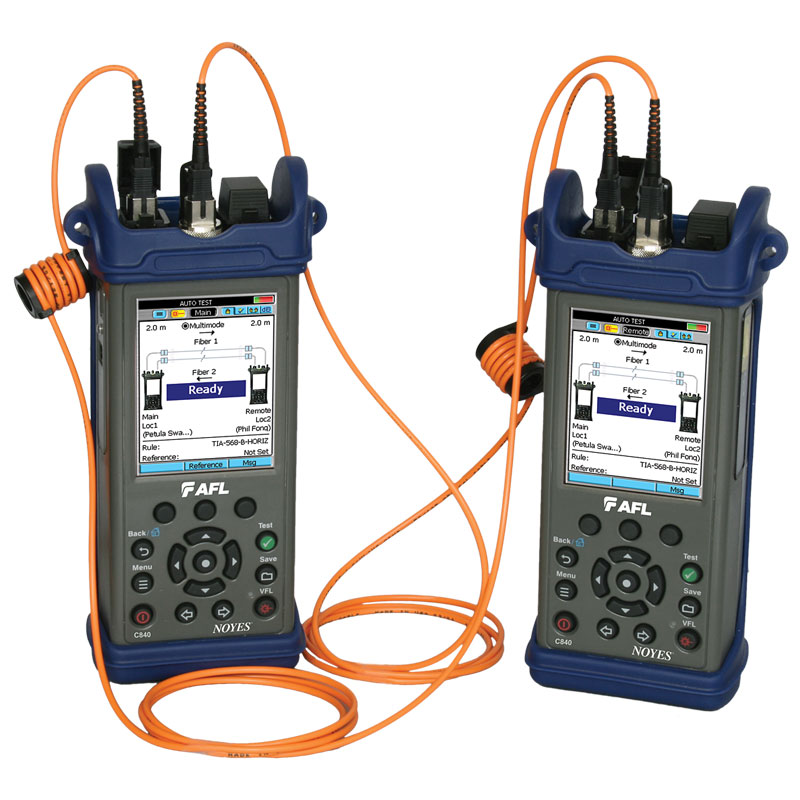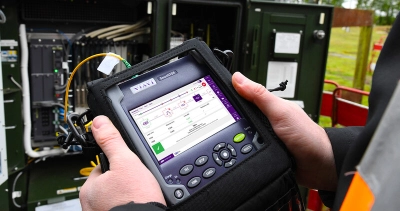Engineers use the optical fibre diameter analyser to ensure fibre uniformity.
Engineers use the optical fibre diameter analyser to ensure fibre uniformity.
Blog Article
Discover the Relevance of Optical Fiber Testing in Modern Telecommunications
In the world of modern telecommunications, the relevance of optical fibre testing can not be overemphasized, as it serves as the foundation for ensuring network integrity and efficiency. What are the certain benefits that regular testing offers, and just how might it form the future landscape of telecoms?

Comprehending Optical Fibre Testing
Optical fibre testing is a vital procedure in telecoms that makes certain the stability and performance of fiber optic networks. This screening includes a series of treatments designed to evaluate the physical and practical attributes of optical fibers - optical fibre testing equipment. Key criteria evaluated consist of optical power loss, data transfer capacity, and fault area, which are crucial for preserving top notch communication web links
The testing process commonly involves making use of specific tools such as Optical Time-Domain Reflectometers (OTDR) and Optical Power Meters. OTDRs are utilized to identify and define mistakes, interlaces, and adapters within the fiber, while power meters determine the transmitted light signal stamina to establish effectiveness.
Additionally, testing is conducted at different stages, consisting of throughout installment, maintenance, and troubleshooting, to make certain that the network meets industry standards and operational demands. Conformity with requirements set by organizations like the International Telecommunication Union (ITU) and the Telecoms Sector Association (TIA) is paramount.
Benefits of Normal Checking
Normal testing of optical fibres returns numerous advantages that significantly boost network reliability and efficiency. Among the key advantages is the very early discovery of prospective issues, such as breaks or deterioration in the fibre, which can cause costly downtime if left unaddressed (fibre testing equipment). By determining these troubles proactively, telecommunications providers can lessen service disruptions and make certain constant connectivity for their customers
Additionally, normal screening aids to preserve the honesty of signal high quality. As optical fibres age, their efficiency can be affected by elements such as ecological problems and physical stress and anxiety. Routine analyses enable the monitoring of signal loss and total transmission effectiveness, making sure that the network runs at optimal levels.
One more substantial advantage is compliance with market criteria. Routine testing supports adherence to governing demands, thereby mitigating legal and economic threats connected with non-compliance. In addition, it improves the overall lifespan of the fiber infrastructure by assisting in timely maintenance and fixings.

Common Testing Methods
Examining optical fibers uses various methods to guarantee the integrity and efficiency of telecommunications networks. Amongst one of the most common strategies is Optical Time Domain Name Reflectometry (OTDR), which analyzes the whole size of the fiber by sending out a pulse of light and gauging the reflections triggered by imperfections or breaks. This technique supplies thorough information regarding the place and seriousness of mistakes.
Another prevalent technique is using Optical Power Meters, which determine the amount of light transmitted via the fibre. This strategy aids identify the loss of signal toughness, making certain that it meets sector requirements. Furthermore, Aesthetic Fault Locators (VFL) are employed to identify breaks or extreme bends in the fiber by forecasting a visible laser light into the cable.
Insertion loss testing is additionally vital, as it quantifies the loss of signal power arising from links and entwines within the network. Additionally, the use of Polarization Setting Diffusion (PMD) testing evaluates the effect of fibre characteristics on signal honesty.
Each of these methods plays an important duty in keeping the performance and reliability of optical fibre networks, eventually adding to smooth telecommunications procedures.
Effect On Network Performance
The stability and efficiency you could try these out of optical fibre networks straight affect total network performance. In contemporary telecoms, the performance of data transmission relies heavily on the high quality of the optical fibers made use of. Any degradation in the fiber's condition-- whether because of physical damages, contamination, or extreme bending-- can lead to boosted attenuation and signal loss, substantially impacting information integrity and rate.
Normal optical fibre screening is essential to determine and fix possible problems before they show up as network failures or downturns. Strategies such as Optical Time Domain Reflectometry (OTDR) and insertion loss screening make it possible for specialists to determine the performance of fibre links precisely. These tests not only evaluate the physical condition of the fibers yet also ensure conformity with sector criteria, thus guarding the network's reliability.
Furthermore, a well-kept optical fibre network adds to decreased operational expenses and boosted customer fulfillment, as end-users experience less disruptions and higher data rates. Eventually, This Site the focus on strenuous optical fibre testing methods serves as a cornerstone for maintaining robust telecoms infrastructure, making certain that solution carriers can fulfill the expanding demands for bandwidth and connectivity in today's electronic age.
Future Fads in Examining
As we look ahead, advancements in technology are poised to improve optical fibre testing in telecoms. The surge of automation and expert system (AI) is expected to boost the efficiency and accuracy of testing processes. Automated screening systems can conduct extensive evaluations with marginal human intervention, dramatically decreasing the possibility for mistakes and accelerating time-to-deployment.
Moreover, the integration of maker knowing algorithms will enable anticipating maintenance, enabling network providers to predict potential issues prior to they intensify into failings. This proactive method not only boosts network reliability yet likewise enhances operational prices.
Another arising fad is the development of mobile screening gadgets that supply real-time evaluation - optical fibre diameter analyser. These devices will certainly equip specialists to execute on-site diagnostics swiftly, helping with quicker resolutions and improving solution quality
The growth of 5G networks better necessitates the evolution of testing methodologies. As transmission capacity needs enhance, typical testing methods might no more are enough. Innovative remedies such as optical time-domain reflectometry (OTDR) and progressed spooky evaluation will become crucial in making sure the honesty and performance of high-speed links.

Verdict
To conclude, optical fiber testing is vital for guaranteeing the stability and dependability of modern-day telecoms networks. Routine screening techniques not only help determine prospective problems such as signal loss and faults but likewise add to enhanced network efficiency and consumer contentment. As the demand for seamless connection remains to expand, the adoption of innovative testing methods will certainly play an important role in keeping top notch network next standards and sustaining the developing landscape of telecommunications.
Report this page